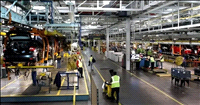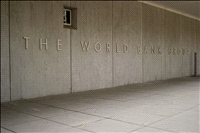Mukesh D. Ambani
By Dear Friends, | 15 May 2001
I am happy to be here this evening. I thank Investment Research and Information Services, or IRIS as it is popularly known, for this opportunity.
In January, Shri Swaminathan approached me to deliver the SS Nadkarni Memorial Lecture. I was delighted. For here was a unique opportunity to publicly acknowledge what Shri S. S. Nadkarni meant to all of us in Reliance. Here was an occasion to pay a tribute to this extraordinary personality.
Mr. Nadkarni was an engineer who gravitated into development banking. He marched in step with India’s progress. He saw Reliance grow from a Rs. 10 crore company to a Rs. 20,000 crore corporate group. On several occasions, I had revealing glimpses of his incisive insight and keen sense for detail. In the course of appraisal of RIL projects, I would personally face his searching scrutiny. Preparing for a final project meeting with him was more challenging than all the examinations I have had at Stanford. It was a pleasure to break down for him a project or an investment proposal into its various components. He would closely look, not only at the financial and market aspects, but also their technology dimension. He was not satisfied with what is the best today. He was always looking ahead at what will be relevant tomorrow. He had an obsession for next generation technology. He did not pose problems for blocking things. He endeavoured to find solutions for the most difficult problems. At all times and in all sectors, he had a deep understanding of technological trends. He skillfully played various instruments of the orchestra of development to ensure profit for the project and growth for the country. I dedicate this talk to this remarkable genius, who had the rare ability to blend finance, marketing, management and technology into a fascinating mosaic.
We, at Reliance, have a very special place for Shri Nadkarni – close to our heart. With my father, Shri Dhirubhai Ambani, he had a very warm and productive relationship. He appreciated and encouraged my father’s drive and determination. My father is full of admiration for the depth of his comprehension, his masterly perspectives of future trends and stimulating impetus to initiative and excellence.
Shri Nadkarni was intimately involved in all our projects – right from the time Reliance was incorporated till recently when our refinery project was conceptualised. He goaded us to be at the leading edge of technology. He would closely monitor our progress by visiting our sites. He would look at both the macro and the micro issues with incredible thoroughness. He would not be weighed down by constraints. Most importantly, he would motivate us by saying "You can make it. I fully trust your abilities."
The story of Reliance would be incomplete without an acknowledgement to his unstinted support.
Shri Yashwant Sinha and Dr D.R. Mehta, who were the first two speakers in this Lecture Series, had focussed on the economy and the capital markets. These areas are dear to the financial community, which is substantially represented in this august audience today.
I have chosen to speak on ‘Technology in a Changing World’. This is with deference to Shri Nadkarni’s passion for technology, a quality that distinguished him from others in the financial community. It is my way of paying a tribute to Shri Nadkarni’s memorable legacy.
Technology – A perspective
Let me begin with the very basics of what technology is. In essence, it means the application of science to the solution of problems. It enables human beings to regulate their environment. It encompasses ways and means by which men and women harness nature. In short, technology is the application of human knowledge for management of the Universe.
It is thus clear that technology is not merely a matter of machines and microchips. It is not a matter of interest only for scientists and laboratories. Technology today is embedded intractably into the fabric of our existence. It decides how long a person will live. It regulates how we work and how we communicate with each other. Technology has a bearing on how we relax and entertain. How we travel and talk.
How we learn and store knowledge. How we anticipate and solve our problems. Technology is fast becoming a key ingredient of leadership. In politics, business, society or military combat, technology makes all the difference - between success and failure, between progress and stagnation, and freedom and subjugation.
We have entered an era in which technology is power, technology is wealth and control over technology is a source of influence and power.
If you go back 2,000 years into history, for about 1,800 years we had virtually no major technological developments, save for the printing press invented in the year 1455. Things have changed, since the invention of the steam engine in 1769. It is only in the last 200 odd years that the world has seen the rapid proliferation of technologies - electricity, automobile, aircraft, phonograph, photograph, telephone, transistor, radio, refrigerator, colour television, computer and now the Internet. Technology has impacted life in every conceivable way.
Even within this two hundred year phase, the last fifty years have witnessed the induction of technology in our lives at a furious pace. For the radio to go up to 200 million users, it took forty years. TV achieved the same figure in 20 years. For Internet to reach this figure, it took only five years. In fact, in the last fifty years science and technology have transformed our lives in a manner that surpasses the wildest of science fiction. We now sit in our living rooms and watch events taking place on the other side of the planet – wars, sporting events, famine and revolution – as they actually occur. Students around the world do their homework on personal computers, each a fraction of the size and hundreds of times more powerful than the models of the fifties. Doctors routinely perform delicate surgery with lasers. Fibre optic cables connected to video cameras permit them to see the inside of the body and operate through tiny holes in the skin, often without cutting the skin at all. Military pilots and soldiers use infrared technology to see in the dark. Electronic guidance enables them to attack distant targets with unbelievable precision. In medicine, communication, education, defense, transportation – everywhere we live – science and technology have changed our way of life.
This exponential growth will continue to snowball at an unprecedented pace. In the next twenty years, more will be achieved than the previous one hundred years. Air traffic control by satellite is no longer a hypothesis. Worldwide, free trade will become a reality in our lifetime. Real-time universal language translation for both voice and text is already on the agenda. Thus language differences will cease to be a barrier in communication. Eradication of most diseases in the world appears to be within humankind’s technological reach. It will soon be possible to make accurate global and local weather forecasts upto one month in advance. People will be able to experience vacations and cultural events while sitting at home. Each person may have a unique personal communication number accessible anywhere in the world. It will become a tool of multiple usage. Projects on intelligent vehicles are already underway.
Drivers will have access to systems in cars that help them navigate select routes and retrieve information about the locality, including hotels, restaurants and events.
I would like to underline one important additional point. We are in an age where a single macro discovery can lead to scores of innovative micro applications. Who would have guessed a few years ago that the fibre optic cable created for long-distance communication would be equally efficient as a tool in microsurgery? Microprocessors have spawned hundreds of applications once they were understood. Shri Nadkarni was always fascinated by technology – he was one of the first to take the PC on his desk. He would always tell me, " Mukesh, we have to keep in step with the unnerving pace of the technological revolution. We have to adjust our minds to the fact that the world in the next twenty-five years would bear as little resemblance to what it is today; in the same way as today’s world is so different from what it was fifty years ago."
This is because more technological upheavals are taking place in one year than they have in several decades. I will illustrate this point by taking you only twelve years back – and take only one year – 1988 as a case study. Achievements during this one year include the following.
US surgeons implanted the world’s first plutonium powered pacemaker. World’s largest tunnel under the sea was opened. It connected Hokkaido and Honshu in Japan. Australia invented the most powerful radio telescope in the Southern hemisphere.
The first transatlantic optical fibre telephone cable entered the service linking France, the UK and the USA. It could process 40,000 simultaneous conversations. Discovery, the first US manned space mission, was successfully launched. A new mirror system was devised that concentrates sunlight to 60,000 times its normal intensity. Surgeons performed the first brain-cell transplantation in UK. Nobel Prize for chemistry was awarded for discovering the structure of proteins involved in photosynthesis. On the other side of the balance sheet, an Internet computer virus by a US student jammed over six thousand military computers across the United States.
Incidentally, but significantly, it was also the year in which the ‘Race against Time’ charity event in support of the fight against children’s diseases was organized with fifty million participants worldwide.






























